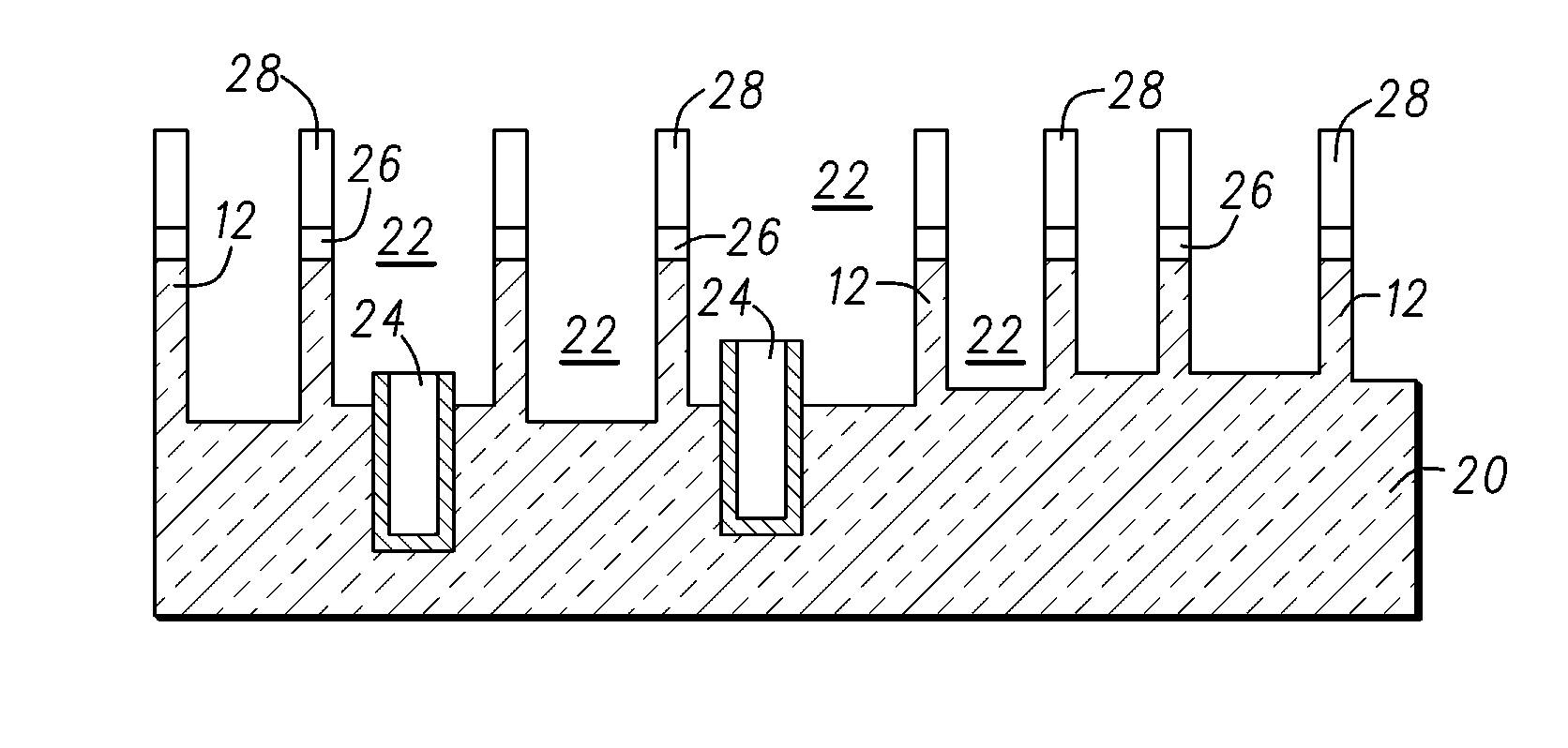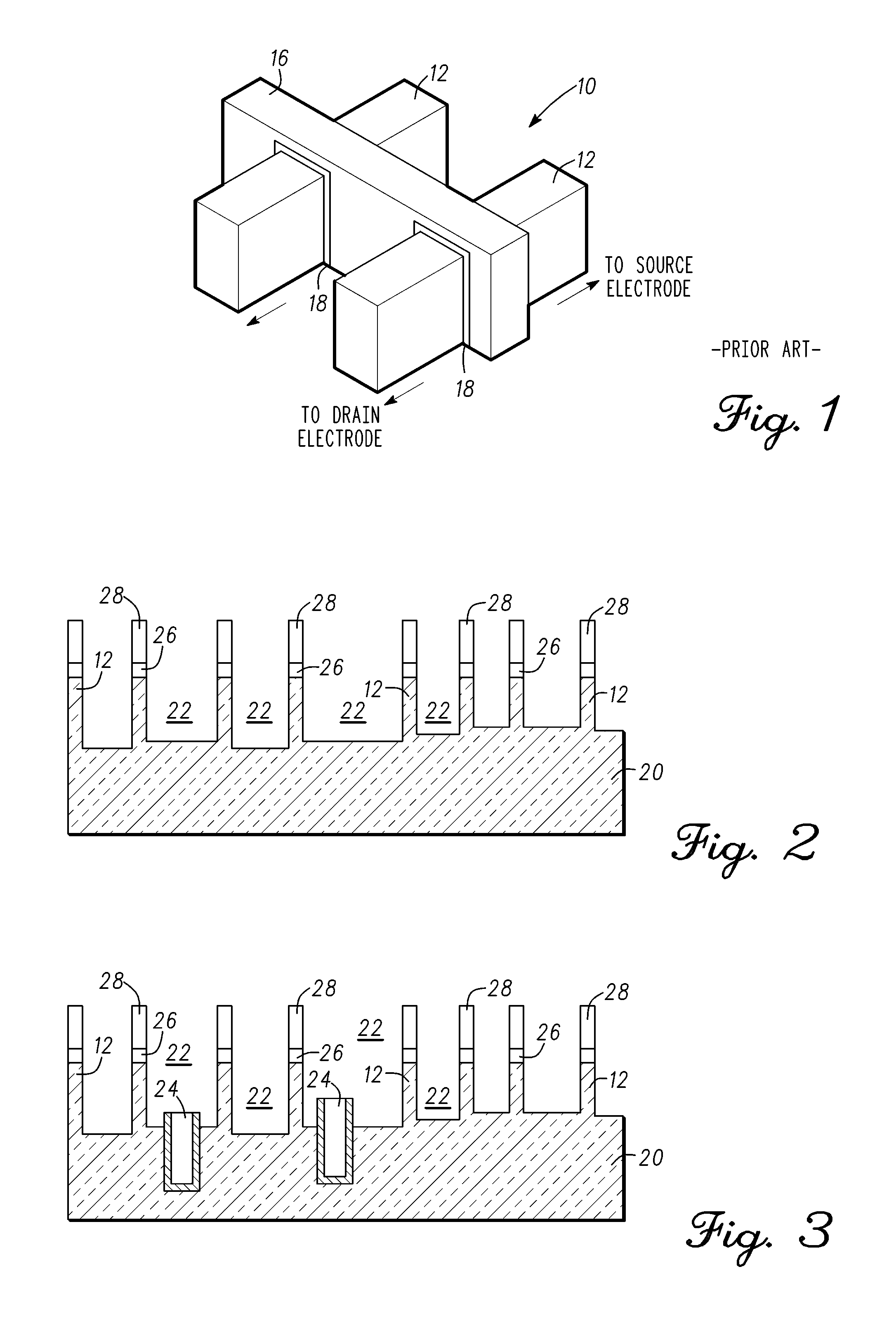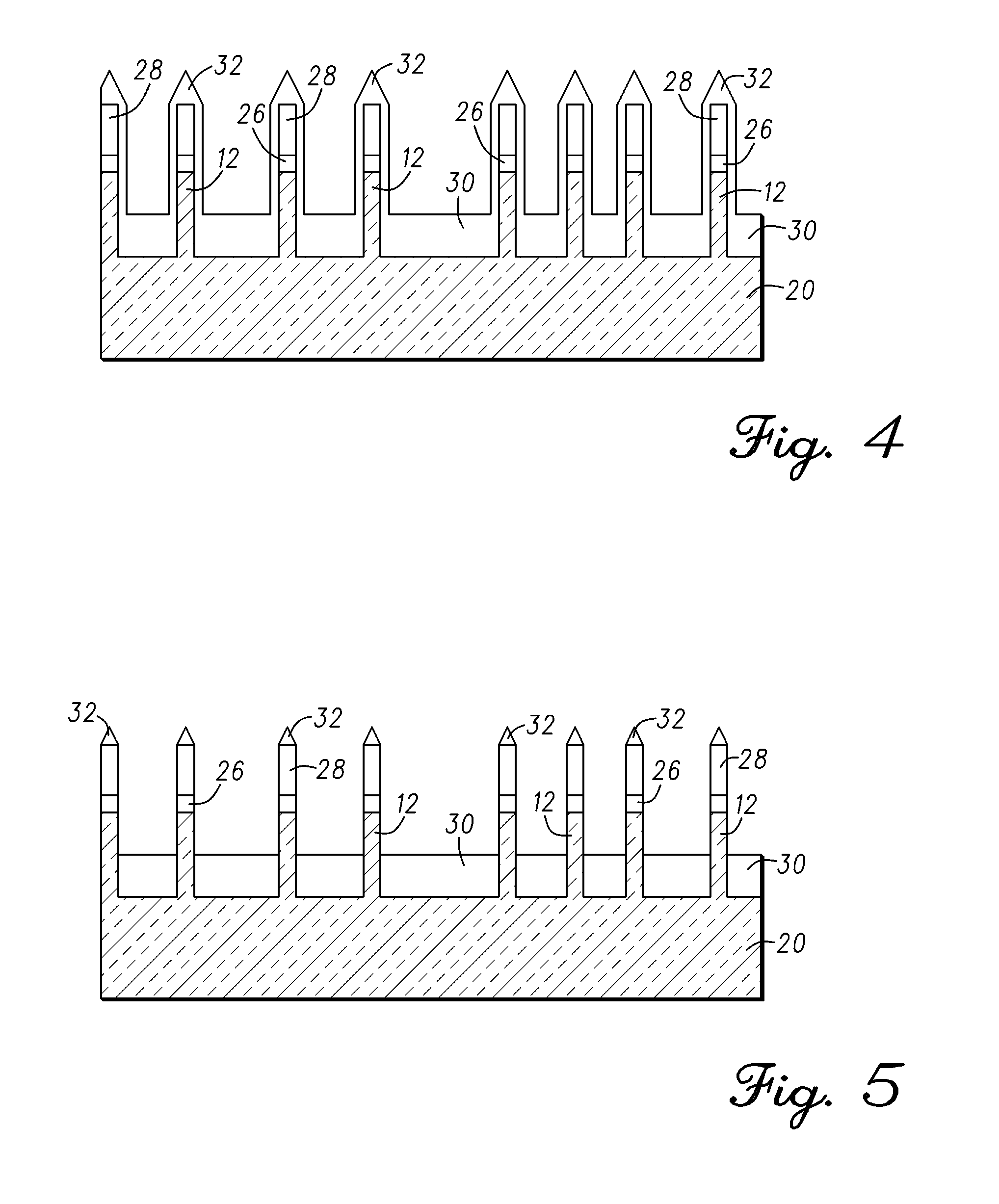Semiconductor structures and methods for forming isolation between fin structures of finfet devices
a technology of semiconductor structures and fin structures, applied in the direction of semiconductor devices, electrical equipment, basic electric elements, etc., can solve the problems of difficult control, affecting the thickness of the dielectric layer, and difficult to isolate the fin structure on a bulk silicon wafer, so as to reduce the variability of the height of the fin
- Summary
- Abstract
- Description
- Claims
- Application Information
AI Technical Summary
Benefits of technology
Problems solved by technology
Method used
Image
Examples
Embodiment Construction
[0018]The following detailed description of the invention is merely exemplary in nature and is not intended to limit the invention or the application and uses of the invention. Furthermore, there is no intention to be bound by any theory presented in the preceding background of the invention or the following detailed description of the invention.
[0019]Methods in accordance with exemplary embodiments of the present invention are provided for forming isolation between one or more previously-formed fin structures 12 on a bulk silicon wafer 20. The step of forming the one or more fin structures defines isolation trenches 22 on the exposed bulk silicon wafer 20 between the one or more previously-formed fin structures. The fin structures 12 include vertical sidewalls.
[0020]Fin structures are typically formed using conventional photolithographic or anisotropic etching processes (e.g., reactive ion etching (RIE) or the like), however, it will be understood that the present invention is not ...
PUM
 Login to View More
Login to View More Abstract
Description
Claims
Application Information
 Login to View More
Login to View More - R&D
- Intellectual Property
- Life Sciences
- Materials
- Tech Scout
- Unparalleled Data Quality
- Higher Quality Content
- 60% Fewer Hallucinations
Browse by: Latest US Patents, China's latest patents, Technical Efficacy Thesaurus, Application Domain, Technology Topic, Popular Technical Reports.
© 2025 PatSnap. All rights reserved.Legal|Privacy policy|Modern Slavery Act Transparency Statement|Sitemap|About US| Contact US: help@patsnap.com



